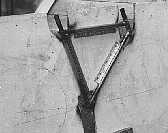
framjig1.jpg
20.60 Kb
I built my first real frame on a jig made from a sheet of plywood. Painting one face of the sheet white let me use it as my drafting board for a full-scale drawing of the frame. Then I cut notches for all the joints that needed brazing, and made a jig on the surface of the plywood using shimmed-out steel angles. Crude and ugly, but the frame was less than 1mm from perfectly aligned right out of the jig.
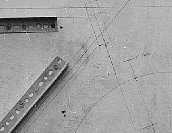
framjig2.jpg
14.29 Kb
A detail from the frame drawing before I cut the notches for brazing. I drew in the diameter of the largest tires I would use, so that I could double check fender-to-downtube-waterbottle clearance, toe clip overlap, etc.

jointjig.jpg
254.54 Kb
The Joint Jigger from Wilch is a simple jig that uses hole saws to cut tubing for brazed or welded joints. Alignment may not be perfect out of the box, but with a bit of initial setup I found it quite reliable and effective. Other builders have siad it doesn't work as well on thin, high-strength tube sets.
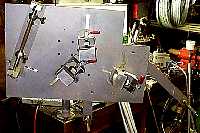
nortac1.jpg
48.46 Kb
When I got more serious about building frames, I hunted around and found a great deal on a used professional jig from Nortac. Quite a step up from plywood and angle iron. All the tubing clamps are adjustable, as is the bottom bracket clamp and the rear triangle's axle.

nortac2.jpg
25.32 Kb
The Nortac jig came with socket-cap set screws in many locations. Where clearance wasn't a problem, I replaced them with thumb screws for faster setup and adjustment.
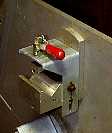
nortac4.jpg
56.70 Kb
Using V-block tubing clamps means any reasonable diameter of tubing will be held in the same plane with no further adjustment.
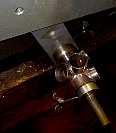
nortac5.jpg
47.28 Kb

nortac6.jpg
23.12 Kb
Along with the frame jig I got this very convenient fork jig.
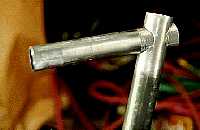
stemjoint.jpg
12.96 Kb
When building my own stems, I usually use a quill that completely pierces the extension. This is a design seen on many old stems. It lets the extension serve as a lug to hold the joint in alignment, and also provides plenty of joint surface for this very critical location.